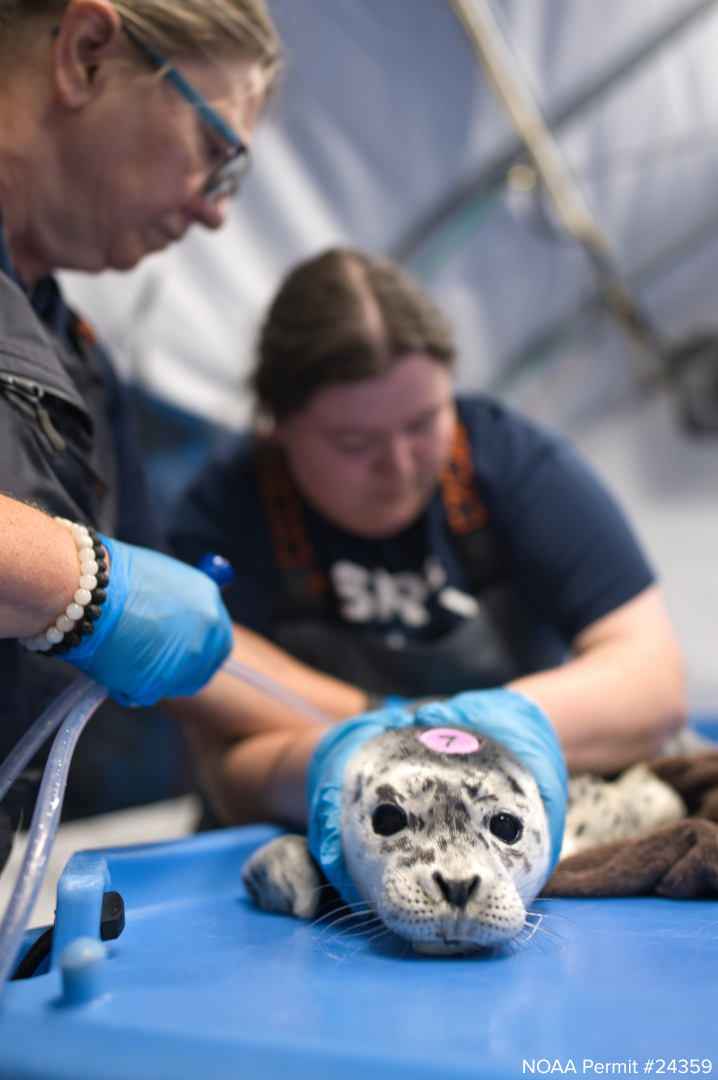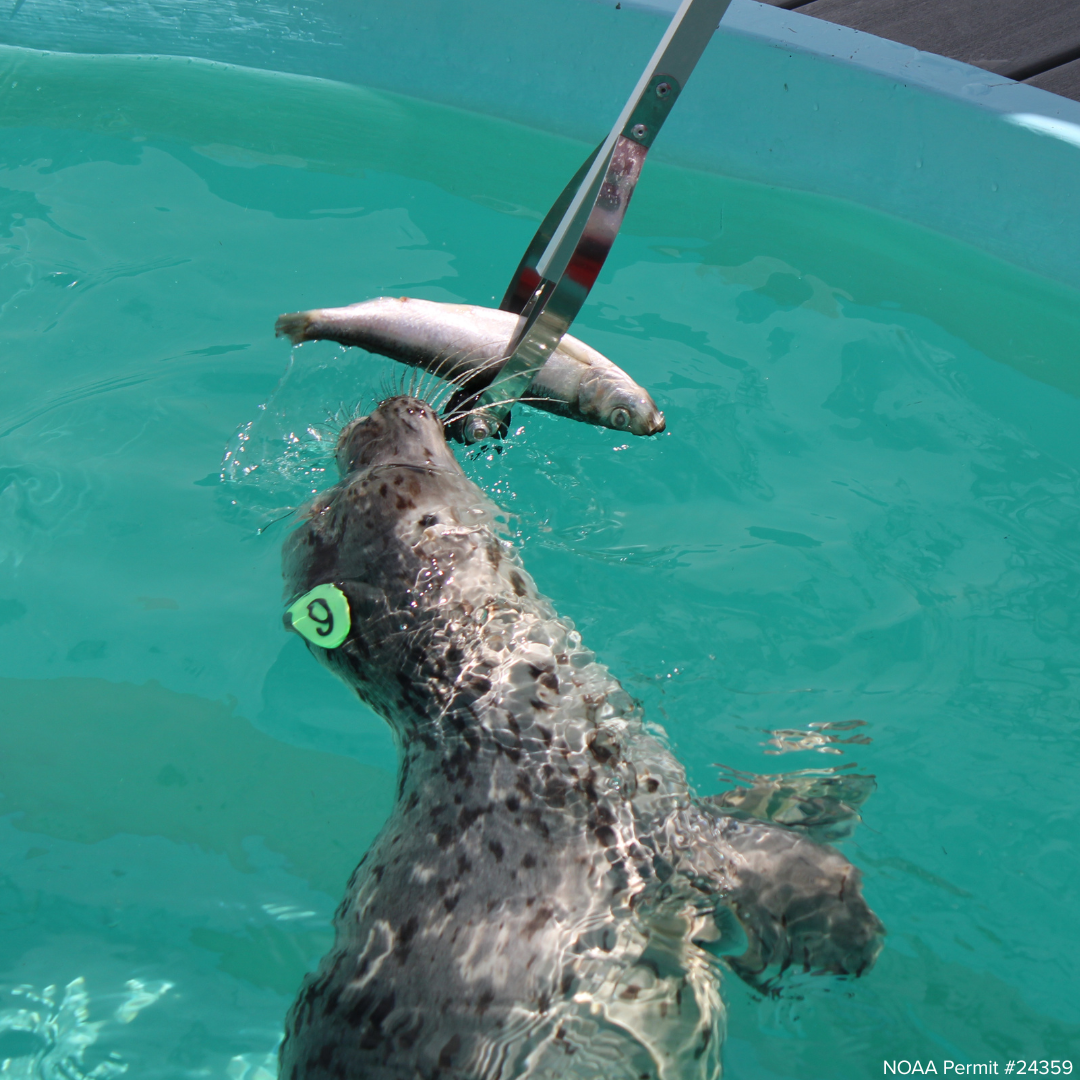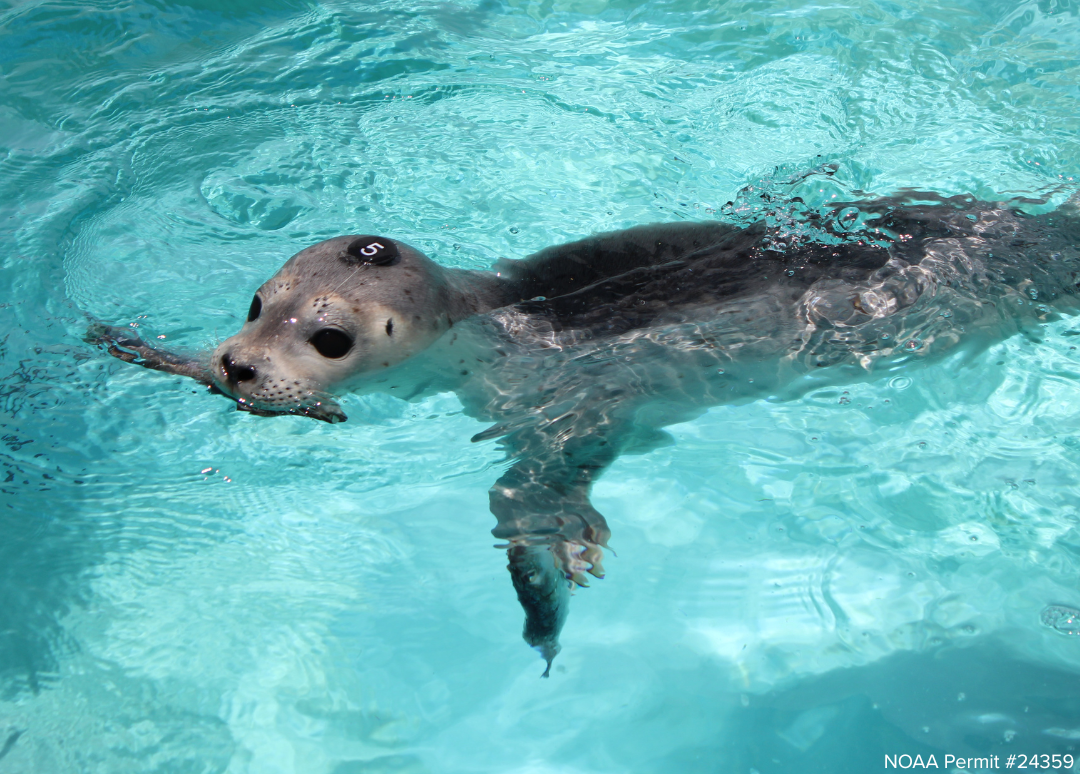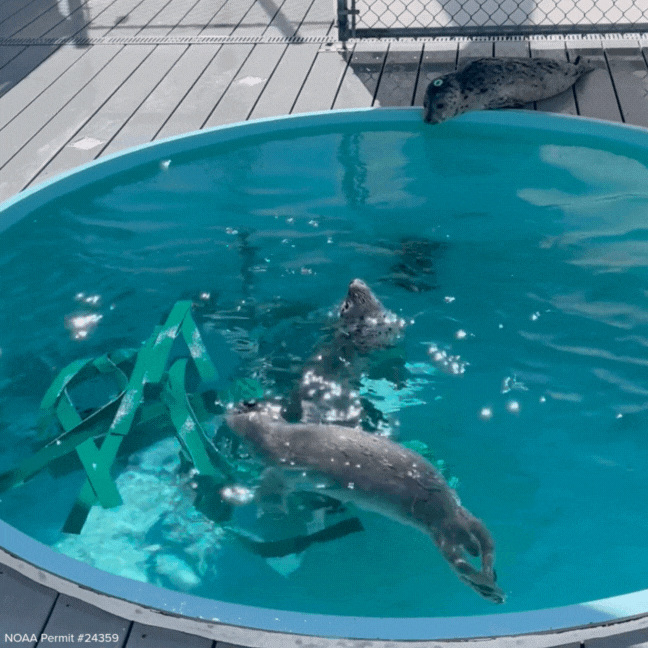Harbor Seal Meals from Formula to Fish
It’s harbor seal pupping season in Washington State, and that means it’s meal time at the SR3 Rescue Center. Four times a day, to be exact.
Human disturbance separates pups from their moms while those pups should still be nursing, and when harbor seal pups come into care at SR3, our goal is to get them healthy, eating on their own, and back out in the wild. The first step is to continue a version of nursing at the Rescue Center. But as humans, we need to handle them as little as possible to prevent habituation and ensure the pups can return to the ocean - enter: Tube Feeding.
Step 1: Tube Feeding
In the wild, harbor seal milk is 50% fat, which helps pups double their weight before they are on their own. At the Rescue Center, we use a formula customized to mimic harbor seal milk as closely as possible so they get similar fats and nutrients. This formula is delivered to the pup by a large syringe and a tube led through the pup’s mouth and into their stomach. While harbor seal pups suckle in the wild, bottle feeding at SR3 would mean too much hands-on time, causing them to become accustomed to humans and unable to return to the wild. With tube feeding, we can feed a pup in less than a minute. It also ensures that they don’t inhale any formula, which could lead to pneumonia.
Step 2: Fish School
Once a pup’s teeth have grown in and they are medically stable, they are introduced to fish. This process, called Fish School, uses sustainably caught herring from Alaska. The fish is first tossed into a swim with them to see if they will eat it on their own. If they show no interest, then animal care staff use a pair of tongs to mimic the movement of fish through the water. If there is still no interest, then the fish is hand fed to the pup by placing it in their mouth. Pretty soon, the pup’s instincts kick in and animal care staff are able to progress back to tong feeding, which will ultimately lead to the pup foraging for fish on their own without the assistance of the animal care team. Fish school takes an average of two weeks, and formula is substituted throughout until the pup has a diet entirely of whole fish.
Do you want to help a patient return to the wild? You can provide a fish school scholarship!
Step 3: Free Feeding
A pup graduates fish school when they eat fish on their own. At this point, a whole meal’s fish can be tossed into the pool with the pup and they can forage for their prey like they will in the wild. When multiple pups are at this stage, the fish is weighed out and combined for all patients in the pool and tossed in together so the seals practice competing for their food. We also have enrichment such as a “kelp forest” made of pipe and felt that can hide herring and helps the pups develop hunting skills. Their success is tracked through their weight gain, which is usually around 35 pounds over the two to three months they receive care at the Rescue Center.
25-5, Orzo, swims after fish in one of SR3’s pools.
Three Seals, Three Stages
Orzo, Gnocchi and Macaroni spend a sunny afternoon in the pool with their kelp forest enrichment.
Every pup that comes through our doors is unique and develops at different rates, which is why we customize our care to meet their individual needs. The first three harbor seal pups of this year’s pupping season are at different stages of feeding, despite having arrived at the Rescue Center within two weeks of each other. Orzo ended up skipping fish school, eating the first fish that was added to her swim, and is now free feeding at every meal. Gnocchi, the second pup to arrive, is now at fish school for every meal and is picking it up quickly. Macaroni is the most recent arrival of the three, and his teeth have not fully come in yet so he is still on a diet of harbor seal formula.
Having patients at different feeding stages lends to busy mealtimes at the Rescue Center. But thanks to the animal care staff, interns, volunteers, and our strong community of supporters, we can ensure that every pup gets the specialized care and food they need.




